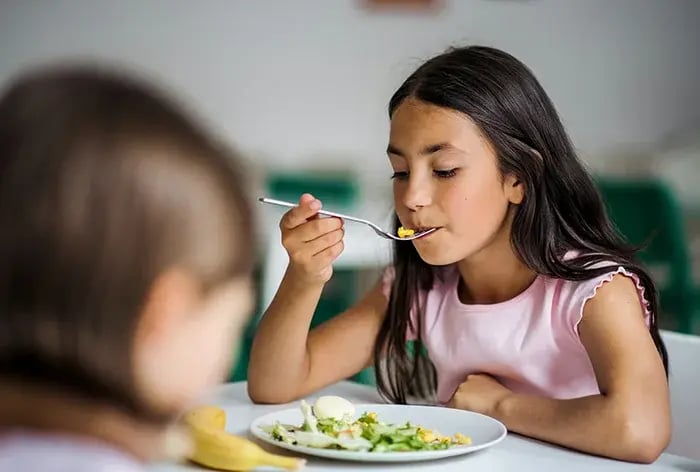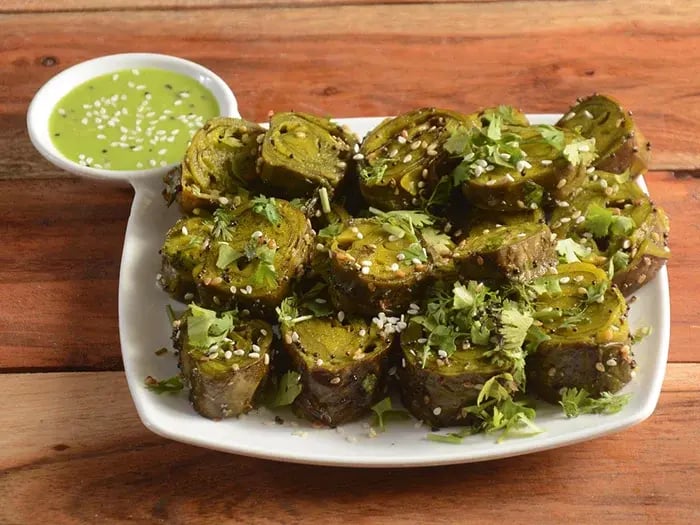- Benefits
- How to cook for Kids
- Benefis
- How to Cook for Kids
- Benefits
- How to Cook for Kids
- Benefits
- How to Cook for Kids
- Benefits
- How to Cook for Kids
Introduction
Green leafy vegetables are a storehouse of a varied range of indispensable vitamins, minerals, and antioxidants, providing numerous health benefits to the growing children, thereby supporting proper growth and development and overall well-being. Apart from an elevated immune function, cognitive enhancement, and benefits to digestion, these facilitate proper growth of bones and muscles. No doubt, children do need green leafy vegetables in their diet to ensure holistic health but getting them to eat these protein-rich greens is quite a task sometimes. But that is okay because with a bit of creativity and the right recipes, you can make these vegetables both appealing and delicious for your kids. Here are some green leafy vegetables that are popularly available In Indian market to be included in your child's meal.
Palak
Benefits
Spinach, known as palak, is a powerhouse of nutrients. It is rich in iron, which is essential to create healthy, oxygen-carrying blood and, in turn, give children energy. In addition, it is enriched with vitamins A, C, and K, folate, and magnesium, which all enhance immune function, bone health, and growth. Its antioxidants help in reducing cell damage and inflammation.
How to cook for Kids
Spinach can be used in preparing dishes children like. You can mix it up and pour it in your kids' smoothies with other fruits, such as bananas and berries, and create a nutrient-packed drink. The leaves can also be added to pasta sauce, mixed in scrambled eggs, or even blended in soups and purees. Plus, these can also be made into parathas or can be added to cheese sandwiches.
Sarso
Benefis
Mustard greens are a reliable source of vitamins A, C, and K, and they provide a good amount of calcium and iron. These nutrients help in strong bones, healthy vision, and a strong immune system. Mustard greens are also rich in glucosinolates, which have been proven to show anti-cancer properties.
How to Cook for Kids
Sarso can be used to make a mild, creamy sauce that goes well with pasta or rice. The other option is sarso ka saag, a traditional mustard-green-based dish cooked with spinach and spices and can be relished with roti or rice. Adding mustard greens to soups and green smoothies are other options.
Methi

Benefits
Methi, or fenugreek leaves, are rich in nutrients like vitamins A and C, calcium, and iron. They enhance digestion, are good for blood sugar levels, and general immunity. Another feather in its cap is its anti-inflammatory properties.
How to Cook for Kids
Add methi to the dough and make methi parathas. This green makes a great combination with dals, soups, or curries because of its stronger flavor. Methi can be combined with pancake batter, or it can be made in vegetable fritters.
Bathua
Benefits
Bathua is a very nutritious green that is rich in vitamins A and C, calcium, and iron. It helps digest food, strengthens bones, and boosts immunity. Bathua also helps in detoxifying the body and enhancing skin health.
How to Cook for Kids
Bathua can be used to make delicious parathas or used in soups and stews. One can even mash the green leaves of this and serve it as a puree or make pasta and dip sauces. A yoghurt-based side dish, such as bathua raita, can be a refreshing and nutritious option.
Arbi ki Patte

Benefits
Taro leaves are one of the richest sources of vitamins A and C and provide calcium and iron, which are very essential for eyes, immunity, and bone health. Besides, they are also great sources of fibre, so they are good for the digestive system, ensuring a healthy gut.
How to Cook for Kids
They can be traditionally used to make items like patra, where the leaves are coated with a spiced gram flour paste and steam cooked. Taro leaves can also be added to curries or make rolled taro leaves with a savory filling. The chopped leaves can also be added to fritters or soups to add nutrition.
Moringa Leaves
Benefits
Moringa is a superfood, and its leaves are rich in vitamins A, C, and E, calcium, potassium, and are also a very good plant source of protein. They boost immunity, digestion, and healthy bone and muscle growth. They are also well-known for their anti-inflammatory and antioxidant properties.
How to Cook for Kids
Moringa leaves can be added to smoothies and juices. One can also use moringa powder in baking and sprinkle it over cereals and raita. Cook moringa leaves in soups, stews, and curries or simply sauté them with other vegetables.
Deepali Verma is a senior food and wellness writer with over a decade of experience in top media houses, crafting engaging narratives. She is a professional home baker and loves exploring food from every corner of the world to reading cookbooks. She believes a healthy lifestyle is a combination of mental, spiritual and physical fitness. Her goal always remains to keep moving, eating seasonal and practicing gratitude.
The views expressed are that of the expert alone.
The information provided in this content is for informational purposes only and should not be considered a substitute for professional medical advice, diagnosis, or treatment. Always seek the advice of your physician or another qualified healthcare provider before making any significant changes to your diet, exercise, or medication routines.
References
https://ghomoo.com/the-vital-role-of-greens-in-childrens-development/










